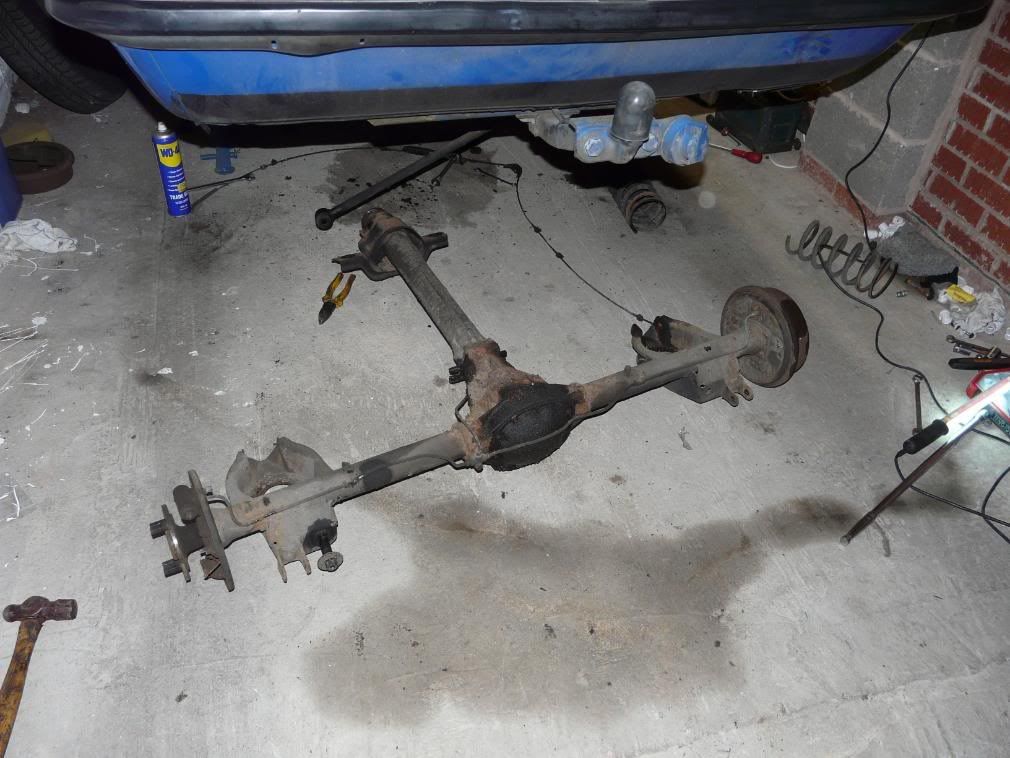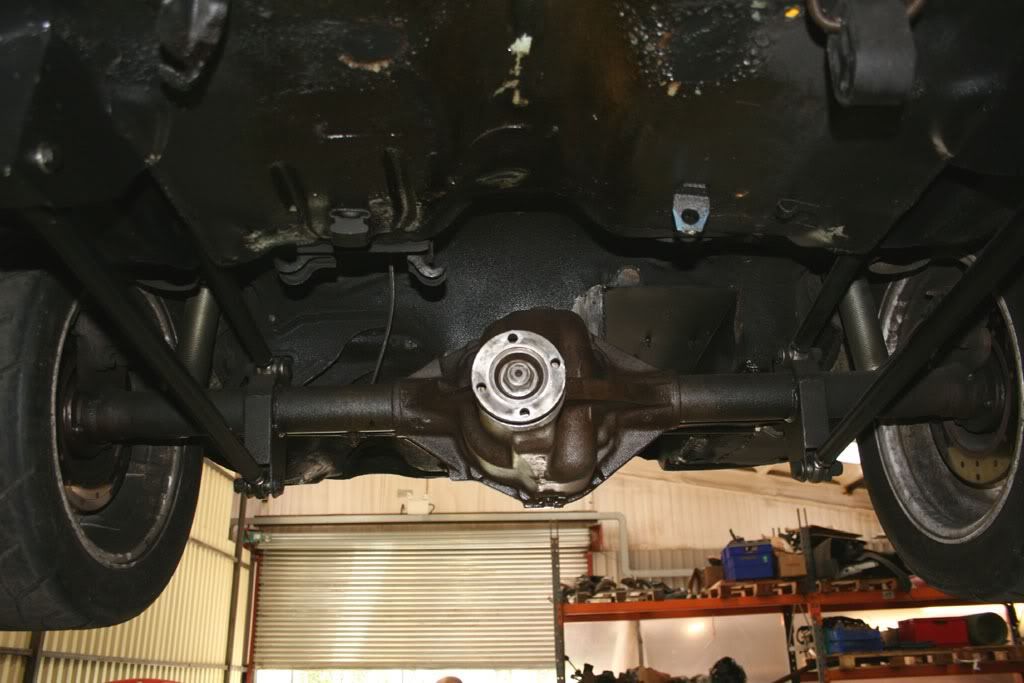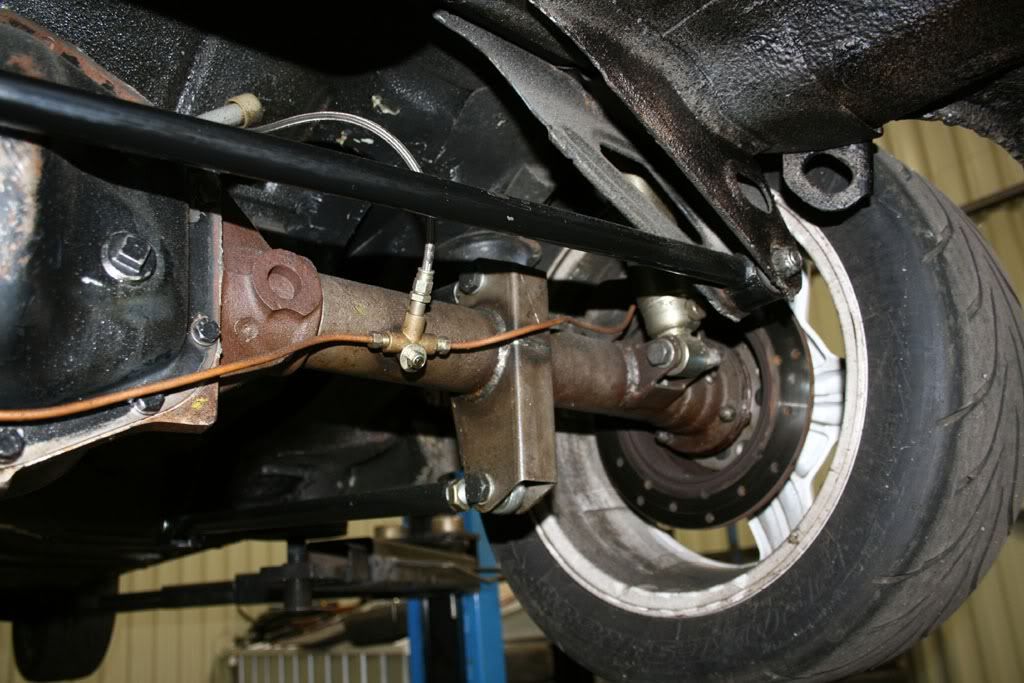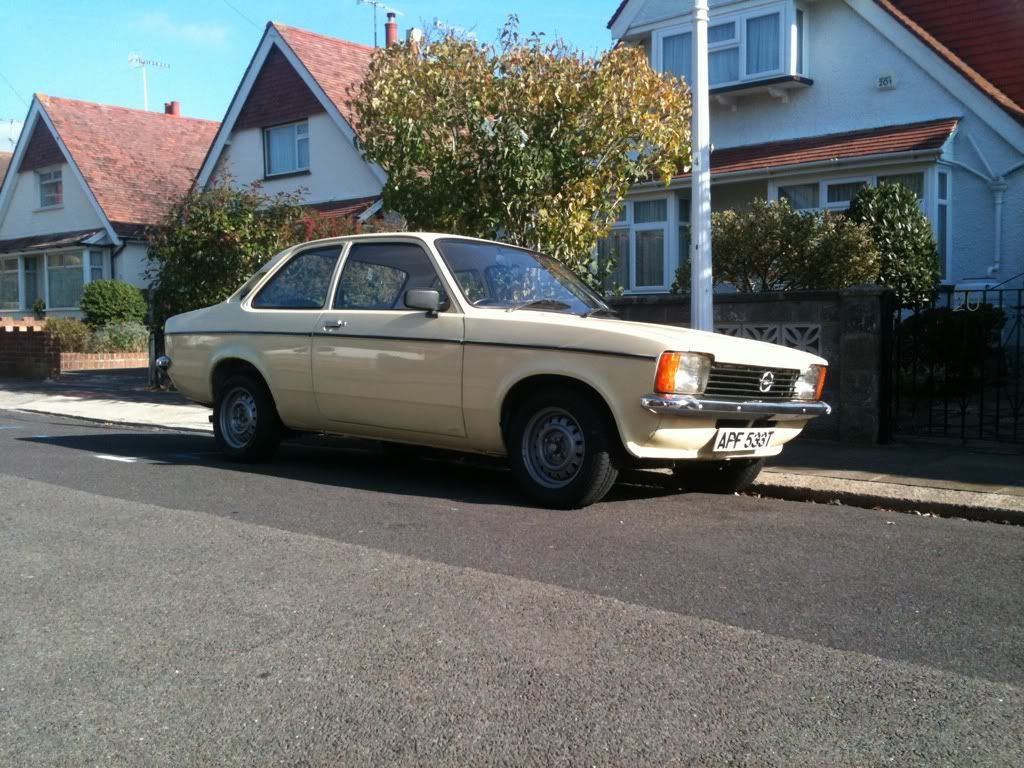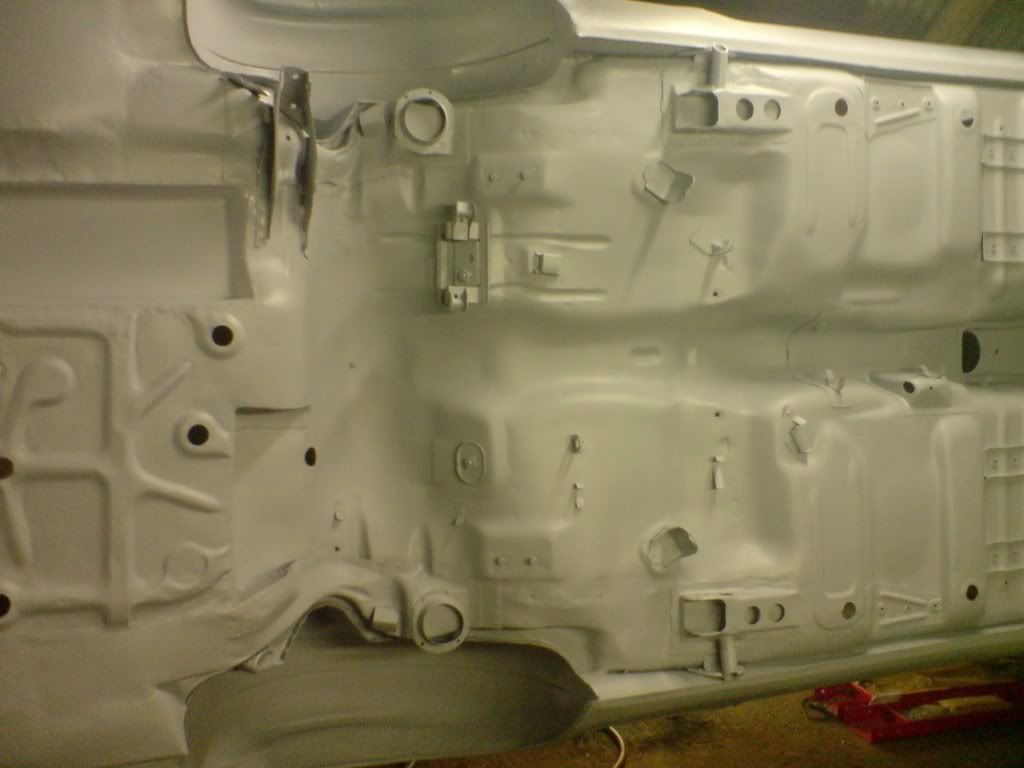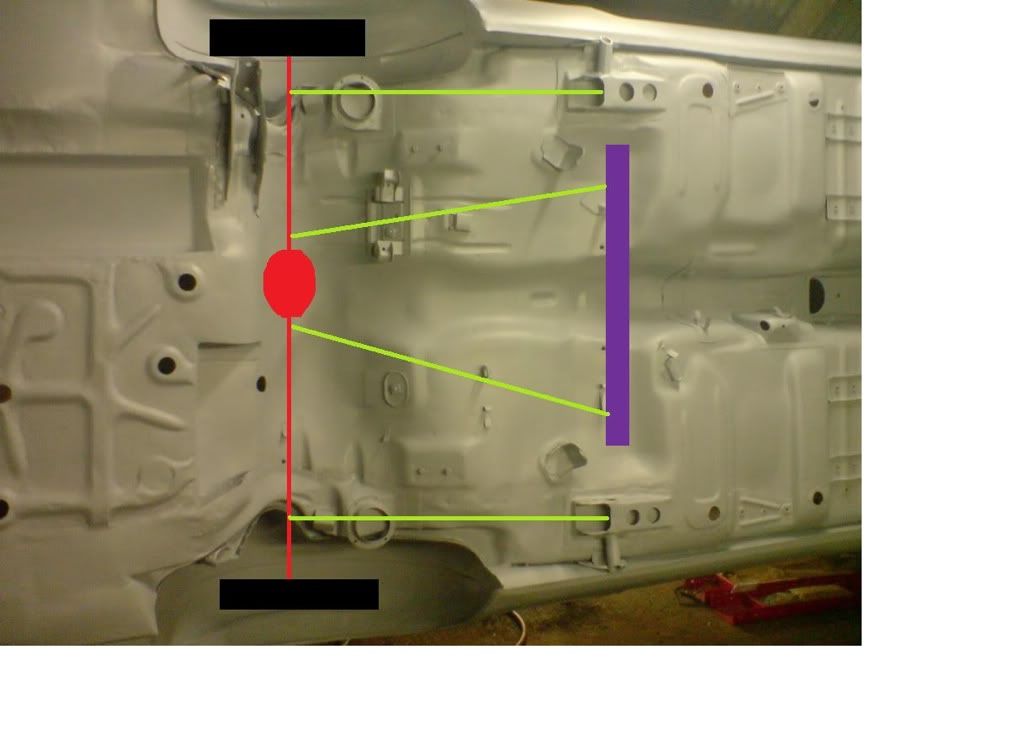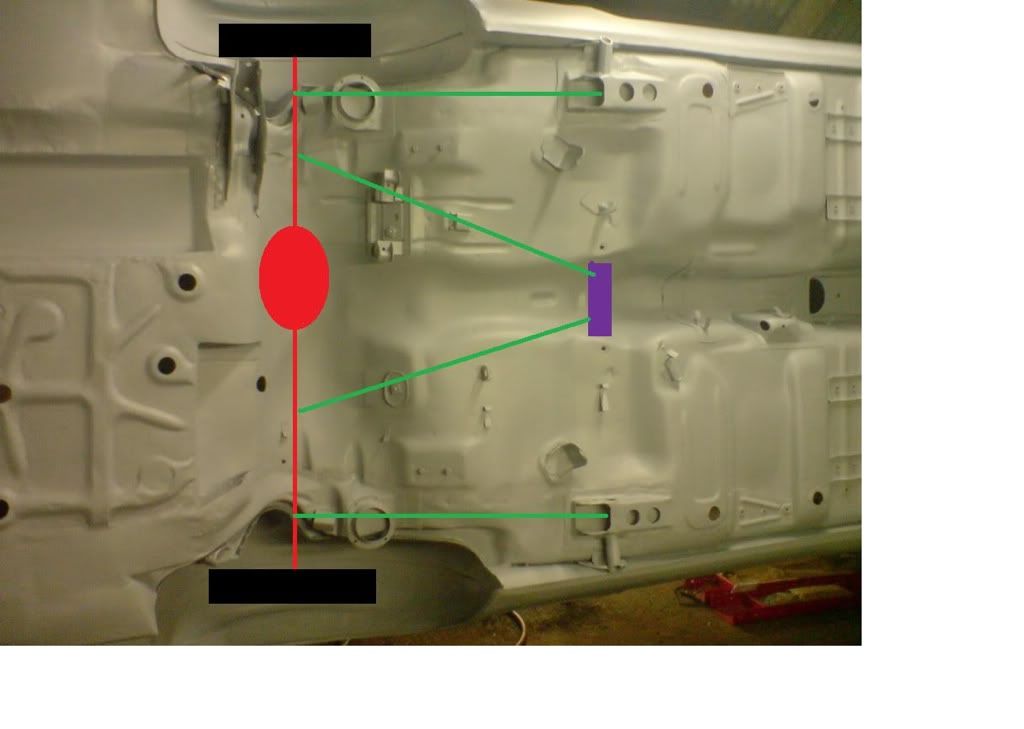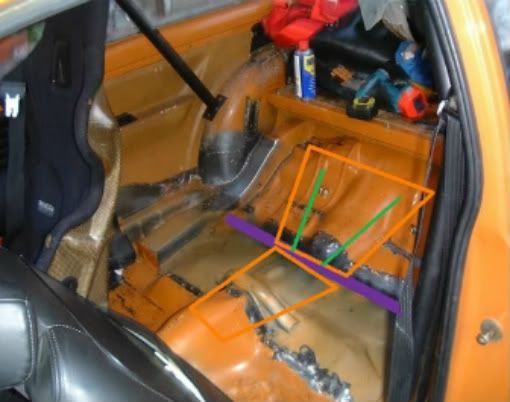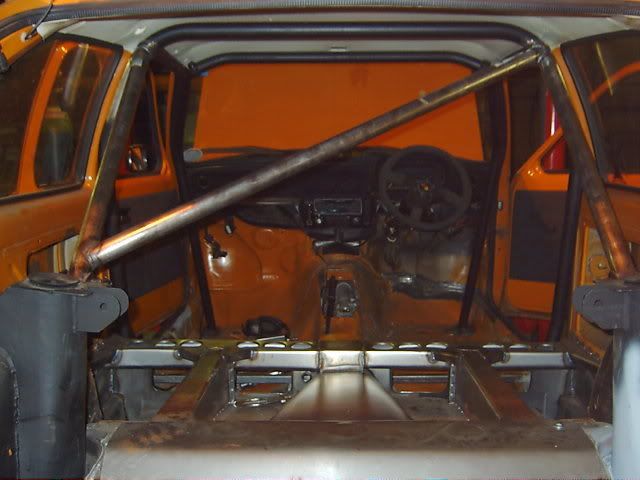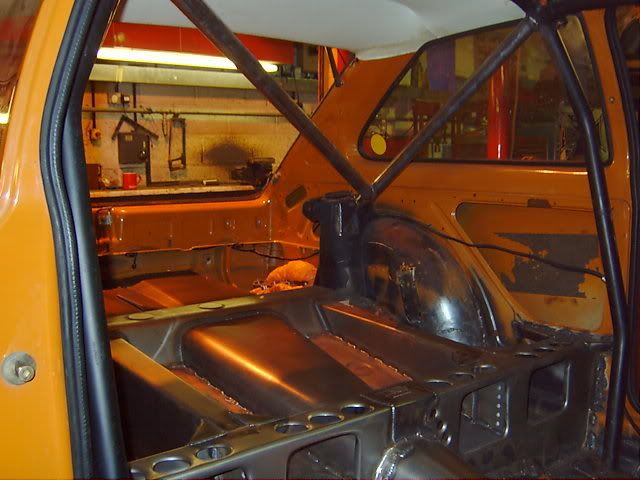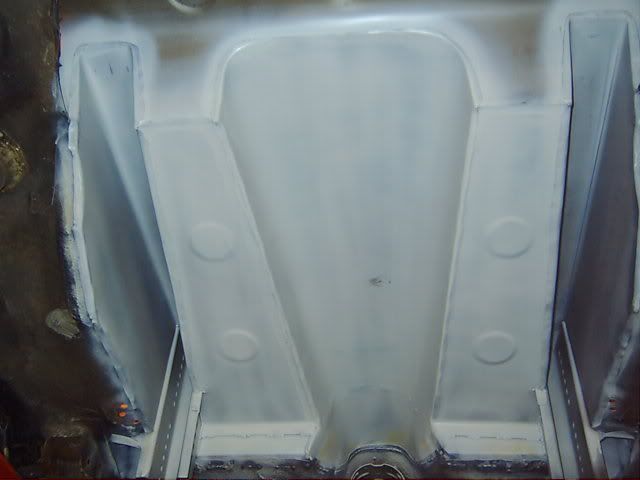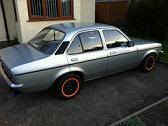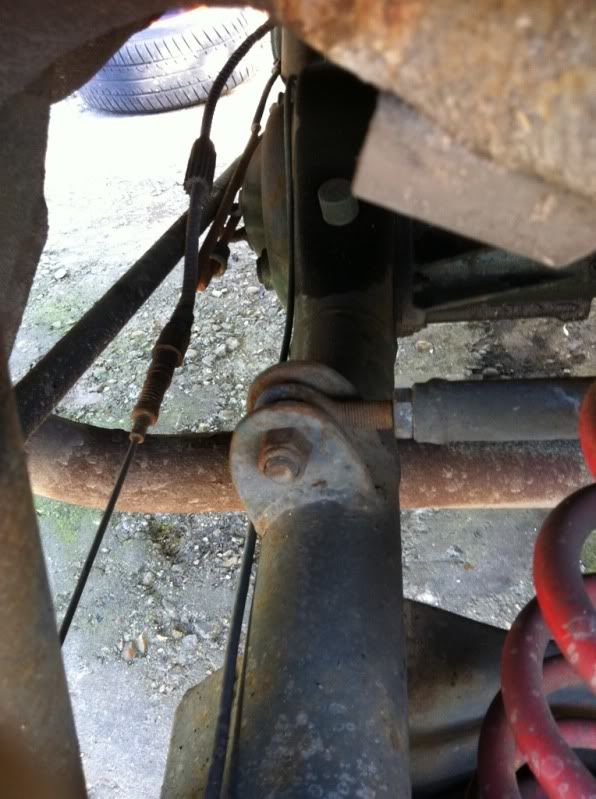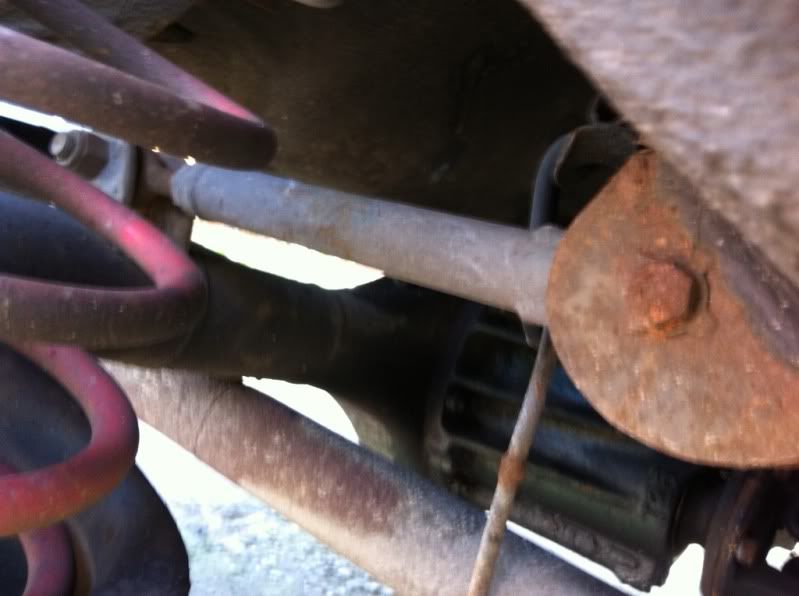That’s a neat looking Kadett, I like it!
You’ve had lots of good advice on this thread already, but perhaps the following will help too:
From a handling point of view, either system (4-link + panhard or triangulated four link) will work nicely and can be made to give you tuneable characteristics (understeer, oversteer, anti-squat, etc) But it has to be designed and installed correctly – it’s a deceptively complicated thing – it just looks like a couple of brackets, some tube, joints and bolts, but it’s the position and relationship of the parts that make it work well.
Basically (for either system), you want the bars parallel to the ground and to each other. In an ideal world, the bars will be as long as possible too. A couple of years ago when I designed a 4 link system, I spent an hour or two with cardboard, scissors and drawing pins to “rapid prototype” the set-up – just in 2d form from the sideview. I really recommend doing this – it shows you how the wheel moves backwards and forwards as you move it up and down. Making the cardboard link bars longer reduces this backwards and forwards arc movement for the same amount of movement of the wheel up and down.
With this cardboard model, you can also prove why you want the bars to be parallel to the ground - basically the further the bars are from horizontal the larger the wheel movement forwards and backwards is as the wheel moves up and down. Ie when the car’s body rolls as it goes around a corner, effectively the wheelbase of the car becomes longer on one side than the other, making it steer like a skateboard steers. By changing the height of the chassis mounting points you can create roll understeer or roll oversteer – That’s why it’s important to design and make the system so that the bars are parallel to the ground and each other – this makes it neutral. If you include extra holes in the body mounts you can adjust it later to give you the characteristics you want.
That’s the theory. In practice, I would:
. Decide on the ground clearance I want – ie the height of the car above the ground.
· Decide what size wheel and tyres I’m going to use.
· I’d then put blocks under the body to set it to this height in the workshop (preferably you’d have a flat’ish floor to work and take measurements from
· This gives you the position (height) of the axle relative to the body – now you know how much room you have around the axle and propshaft – and can decide on whether to have a 4 link & panhard or a triangulated 4 bar system.
· Axle mounts: As a guide, mk2 Escort 4 link systems have the bottom rose joint 2.5inches below the axle centre height and the top rose joint 2.5 inches above the axle centre height.
· With any luck this 2.5” distance will mean that a bar horizontal to the ground running forwards from this axle mount will end up somewhere near the original body suspension mounts.
· BUT, note that on a four link & panhard set-up the top suspension arms HAVE to be the same length as the lower arms (otherwise as one wheel goes over a bump, or the car goes around a corner the different arcs of movement at either end effectively turn the axle casing into a very large torsion bar! – difficult to picture, but a cardboard model will show what I mean)
· Basically, you’d lose the rear seat area to four link mount boxes (perhaps a hollowed out rear seat could be put over the top if you want to keep a rear seat?)
· Or you could make both the top and bottom bars shorter. This is a bit of a compromise, but it works. Lotus Seven type cars have a short 4 link system, as did the early Works Rally Escorts – 16.5 inches from centre of the front rubber bush to the centre of the rear rose joint. (Later Works Escorts had bars of length 25.5 inches)
· Or, you could build what Dez suggests – a triangulated four bar set-up. These can be a neat install if you have (or can make room) around the propshaft and bodyshell. This set-up is more tolerant of unequal length top and bottom arms (You don’t want a really short top arm though – that means the diff pinion angle changes a lot as the wheels move up and down – might cause you trouble with prop shaft Ujs.
· FYI, I think I’m correct in saying that the Roll Centre Height of the triangulated four bar set-up is basically at the position of the top body mounts. As Adam pointed out, a Panhard Rod system can be made to give you an easily adjustable Roll Centre Height.
· Diff pinion angle: You want the angle (when viewed from the side) of the tailshaft of your gearbox to match the angle of your diff input shaft – or be within a degree or so. The angle of the diff shaft varies though as power is applied through the rear wheels (when accelerating forwards the bottom link bar will be in compression and the top link bar is in tension – this takes any “slop” out of the system and hence the length of the bars change a bit) – this is why you build it with the “nose” of the diff slightly down - 2 degrees below the angle of the gearbox tailshaft. See
www.carcraft.com/howto/91758/index.htmlSome parts dimensions from the Escort Rally Prep book might help you (I figure a Mk2 Escort will have similar size, weight & power to your Kadett) “The bar is made from 1inch diameter 10gauge cold drawn seamless tube. A 1” slice of 1” diameter tube is welded to the front of this – into this goes a standard Escort TCA rubber bush held by a 11/16” x 2.5” bolt. The other end of the tube has a 7/16” UNF “threaded slug” welded into it to accept an RC8H rose joint.” You could make yours from the same, or the metric equivalent.
I hope this gives you some ideas. It’ll be a neat project and should give great results.
(ps, do I get a prize for longest & techiest first post? J )
 )
) )
)







